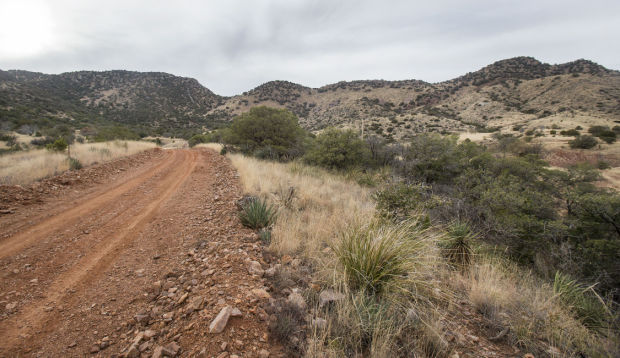Rosemont Mine opponents want the Forest Service to wait to decide on the mine until a second agency makes its decision, but the service says it legally doesn’t have to do that.
The Forest Service says that while it can legally make its decision on the mine without waiting for a separate Army Corps of Engineers permit, the service’s decision won’t be the end of the road for the long, tangled Rosemont approval process.
Before the mine can start construction, the Forest Service must also approve a separate Mining Plan of Operations for the project, said Heidi Schewel, a Coronado National Forest spokeswoman.
But Pima County Administrator Chuck Huckelberry, a longstanding mine opponent, wrote the service last week that it would be wise to wait to make its decision, in part because the Army Corps is still taking new information.
The Corps must decide on a federal Clean Water Act permit application from the mining company, Toronto-based Hudbay Minerals Inc.
Other opponents, led by Save the Scenic Santa Ritas, say that if the Corps decides to deny the permit later, the Forest Service’s decision will be “moot.”
Schewel last week explained the Forest Service’s plans, announced last Monday, to publish a final Record of Decision on the $1.9 billion mine in early June.
That decision will come 10 years, one very thick, final environmental impact statement and two detailed sets of endangered-species reviews since Rosemont Copper first proposed a plan to mine the metal from the eastern slopes of the Santa Rita Mountains southeast of Tucson. Virtually every step of the mine’s approval process has been laden with controversy. A final decision to approve or disapprove the project is certain to trigger litigation.
Given the Forest Service’s many past statements that it legally can’t say “no” to a mine that meets other environmental laws, it’s likely to decide to approve Rosemont. That’s what the service tentatively decided to do back in December 2013, in a draft. The final decision was delayed by a raft of newly discovered issues, several involving endangered and threatened species.
On Friday, Schewel said the reason the decision is coming next month is that “all additional work has been completed” on the mine since the draft 2013 decision.
That includes additional consultations the service had to conduct with the U.S. Fish and Wildlife Service and other cooperating agencies.
“Our responsibility is to complete the process in a timely manner, while meeting all legal requirements,” Schewel said in an email to the Star.
But a decision “is not a permit to operate,” Schewel added.
In submitting a revised mining plan, Hudbay would have to include the various conditions and environmental mitigation measures that the final Rosemont decision will require.
Plus, Rosemont must post a bond to cover costs for reclaiming the mine property. It will cover well over 4,000 acres of private and federal land.
“No ground-disturbing activities on national forest system lands will be conducted” before the mine plan is approved, Schewel said.
The Corps must also approve its Clean Water Act permit before the Forest Service can approve the final mining plan, Schewel said.
In his letter last Tuesday, Huckelberry said a Forest Service decision now would be premature for several reasons.
First, the Army Corps is considering new information on the project that it believes could be relevant to its decision, Huckelberry wrote to Coronado National Forest Supervisor Kerwin Dewberry. The Corps has no timetable for deciding on the project, but its decision, plus any new information, could require the Forest Service to amend its decision, he said.
Asked about this, a Corps spokesman said that it’s not that they’re waiting for new information, it’s just that it must accept anything that comes in that’s relevant to the decision. The Corps’ Los Angeles District has recommended denial of the permit.
But the final decision was booted up to the Corps’ higher-level South Pacific Division in San Francisco because Gov. Doug Ducey endorsed the mine, which requires a higher level of review, said Edward Coffey, a Corps public-affairs specialist.
“I’m not saying that new information can or can’t make a difference, I’m just saying we can’t not accept it, in the time between now and the time we make a decision,” Coffey said.
Huckelberry’s letter also cited the recent Sawmill and Mulberry fires, which together burned more than 48,000 acres including parts of the Rosemont project area and the neighboring areas of Empire Gulch, Barrel Canyon and Davidson Canyon. These fires likely altered those areas’ suitability for endangered and threatened species, he said.
In the past, when smaller fires struck these areas, various agencies were given the chance to evaluate their impacts on these lands for various environmental reports on the mine, he said.
“To omit the same review process for these larger, recent fires seems imprudent,” Huckelberry wrote.
Schewel said she hopes the service can reply to Huckelberry’s letter by Monday.
Last week, Hudbay said through a spokeswoman that it’s pleased with the Forest Service’s announcement of its impending decision.
“It’s a recognition that a lot of years of hard work and study have gone into the science for this upcoming decision,” Hudbay spokeswoman Jan Howard said.





